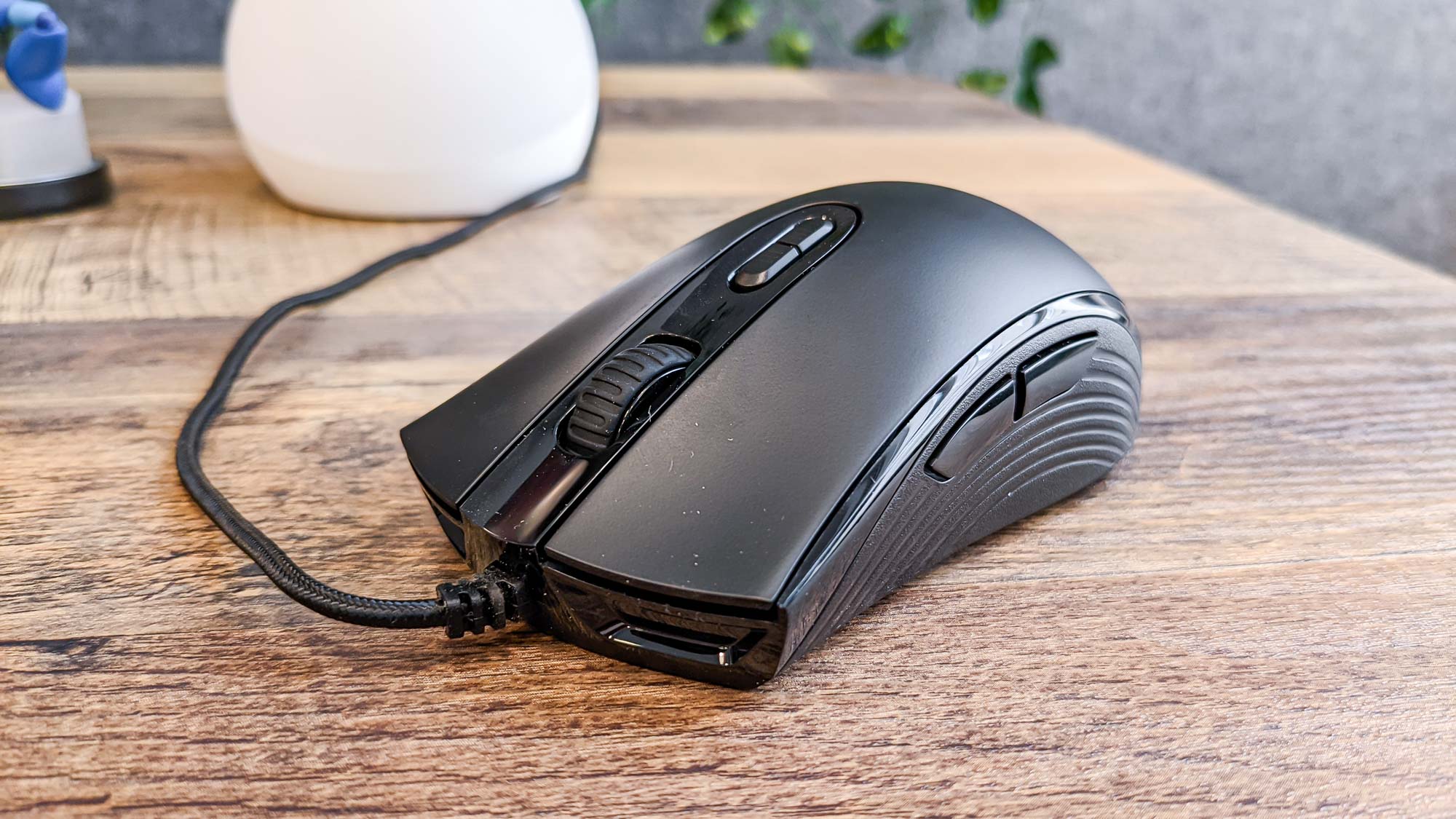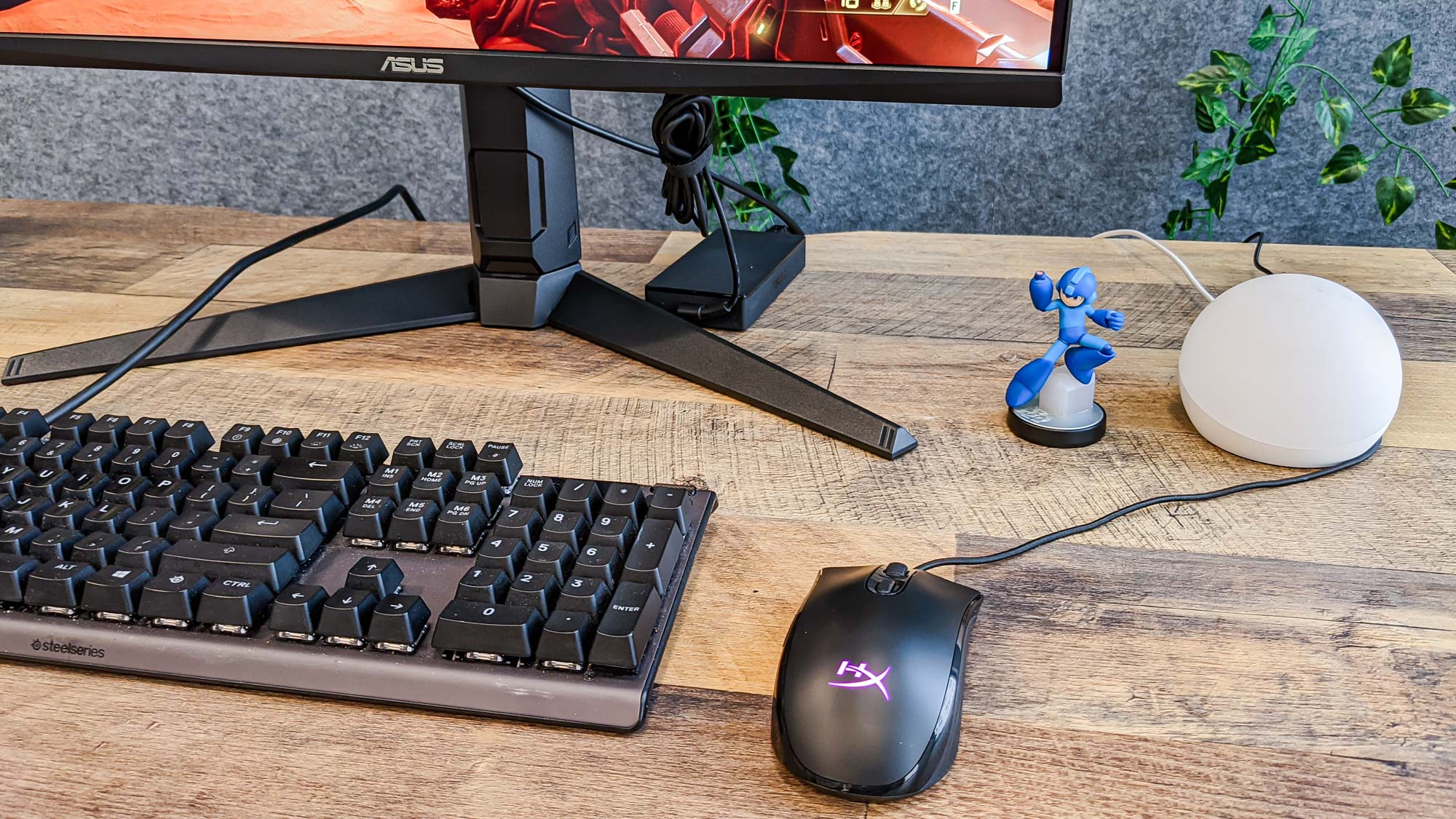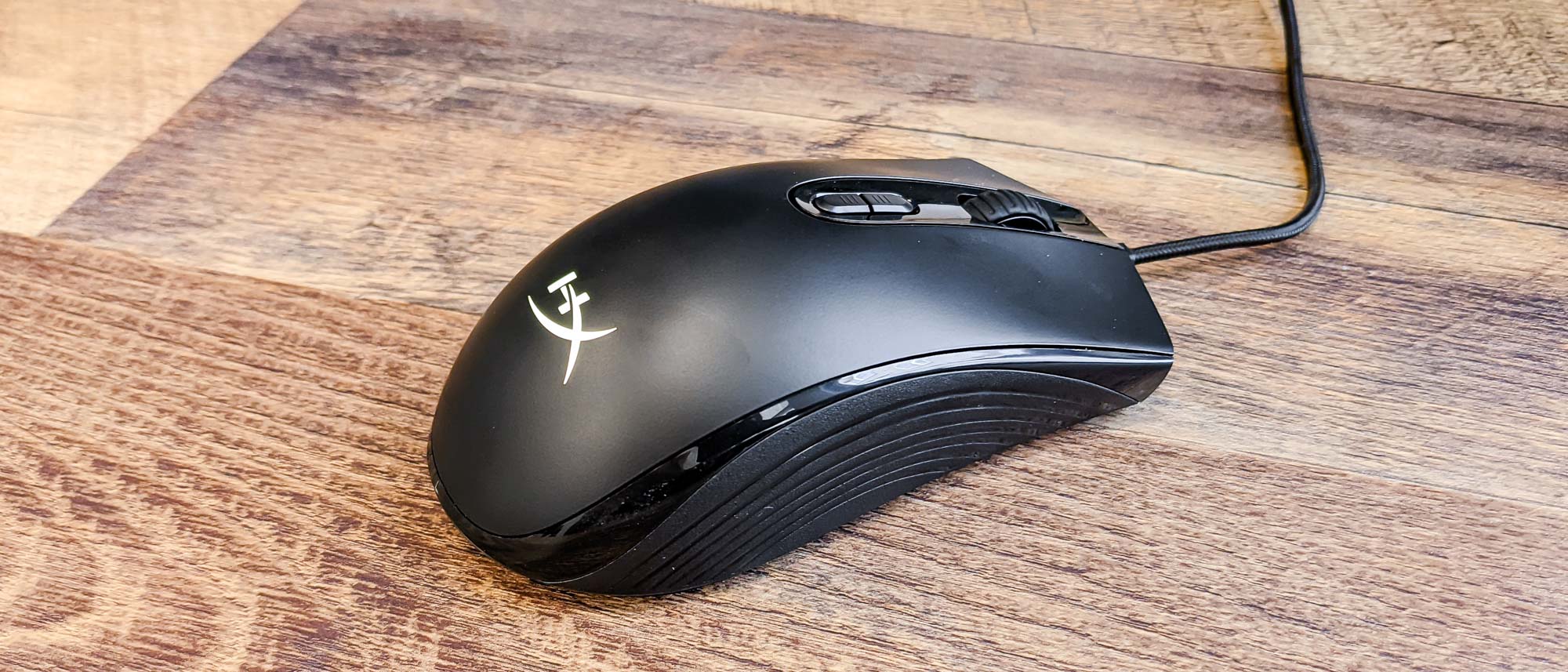Tom's Guide Verdict
The HyperX Pulsefire Core delivers excellent performance and a few premium touches in a surprisingly cheap gaming mouse. If you find its finger grips odd, you can always turn to the identically priced SteelSeries Rival 3.
Pros
- +
Much cheaper than comparable mice
- +
Excellent performance
- +
Smart DPI switching
- +
Good button layout
Cons
- -
Odd finger grips
- -
Touchy software
Why you can trust Tom's Guide
Max DPI: 6,200
Buttons: 7
Size: 4.7 x 2.5 x 1.6 inches
Weight: 3.1 ounces
The HyperX Pulsefire Core isn’t the best gaming mouse I’ve ever tested, but it’s well in the running for the title of best cheap gaming mouse. Although the Pulsefire Core costs only $30, it packs some of the features you’d expect in a much more expensive mouse. Not only does the Pulsefire Core work great in-game, but it also has plenty of customization options and a smart way to switch dots-per-inch (DPI) sensitivity levels.
While the Pulsefire Core’s design has one significant flaw and its software has a few weak spots, the mouse gets almost everything else right. If you want a simple, straightforward gaming mouse, the Pulsefire Core is a good argument for not spending more than $30 on one. Read on for our full HyperX Pulsefire Core review.
HyperX Pulsefire Core review: Design
With its ergonomic design and RGB logo, the HyperX Pulsefire Core should look familiar if you’ve ever seen a gaming mouse before. You can get it in a plain black or stylish pink chassis, but either way, it looks more stylish than a plain office mouse, with sharper angles and more curves.

There are plenty of buttons on this mouse, and they’re all easy to reach. You get a left button, a right button, a clickable scroll wheel, two DPI adjustment buttons and two thumb buttons. They all have a solid, clicky feel to them, and accurately parse whatever commands you program with the HyperX nGenuity software.

The one downside here is, perhaps, the biggest criticism I can muster against the Pulsefire Core. While the left side of the mouse feels good, with a textured thumb grip, the right side of the mouse simply feels wrong.

Rather than curving around to meet the ring and pinky fingers, it curves inward, leaving the two outermost fingers without a place to rest. It’s an annoying, persistent issue that makes the mouse far less comfortable than it should be.
HyperX Pulsefire Core review: Features
The HyperX Pulsefire Core doesn’t have too many bells and whistles — not surprising in a $30 mouse. You won’t find wireless connectivity, tunable weights, swappable side panels or any other features you’d expect in a high-end peripheral. However, the device still offers a fair deal of customization through the competent HyperX nGenuity software.
Get instant access to breaking news, the hottest reviews, great deals and helpful tips.
I’ve written about nGenuity a few times in the past. It’s sometimes worked properly and sometimes malfunctioned, but either way, it’s been a bare-bones experience compared to something like Razer Synapse or Logitech G Hub.
Granted, with a mouse as simple as the Pulsefire Core, “bare-bones” is not necessarily a bad thing. You can reprogram buttons, set up profiles for individual games and adjust RGB lighting — even though the lighting comprises just a small logo on the palm rest. However, this logo serves a useful function, as it will change colors to correspond with your current DPI level. It’s a handy feature that many fancier mice eschew.

Still, nGenuity isn’t a perfect program. Setting up multiple profiles can be a bit of a hassle, as can deleting extraneous DPI levels. (As soon as you click a number, it will set the DPI to that level, which makes it difficult to circle back around and right-click to delete.) Try to download it through the Microsoft Store, if possible, as the standalone executable from HyperX’s website isn’t always the most recent version.
HyperX Pulsefire Core review: Performance
One area where the HyperX Pulsefire excels in its in-game performance. I tested the mouse with Age of Empires IV, Doom Eternal, Cyberpunk 2077 and Final Fantasy XIV, and found that the mouse delivered consistent results across the board. It didn’t favor any particular genre, but parsed my commands quickly and accurately, whether I was ordering a group of villagers to build a castle or syncing up a pistol with a cybernetic implant.

It's worth pointing out that the Pulsefire Core’s versatility might be to its detriment if you favor a particular genre. It’s not as light as esports mice; it has fewer buttons than massively multiplayer online (MMO) mice; it lacks the extra “sniper” button of FPS mice. But to get specialized genre mice, you’ll realistically have to spend more than $30.
HyperX Pulsefire Core review: Verdict
The HyperX Pulsefire Core is one of the cheapest gaming mice on the market, at least from a major manufacturer. In spite of its low price, the device has only one major drawback — its lack of a finger rest. This isn’t a negligible flaw, but it’s also not a dealbreaker, especially considering how well the mouse performs in-game. For everyday PC gaming, the Pulsefire Core is an easy recommendation, particularly if you’re just getting into the ecosystem for the first time.
In terms of competition, the Pulsefire Core is not significantly better than the SteelSeries Rival 3, which also costs $30. In fact, the Rival 3 excels in some ways that the Core doesn’t, particularly when it comes to lighting and software. The good news is that you can’t go wrong either way.

Marshall Honorof was a senior editor for Tom's Guide, overseeing the site's coverage of gaming hardware and software. He comes from a science writing background, having studied paleomammalogy, biological anthropology, and the history of science and technology. After hours, you can find him practicing taekwondo or doing deep dives on classic sci-fi.

